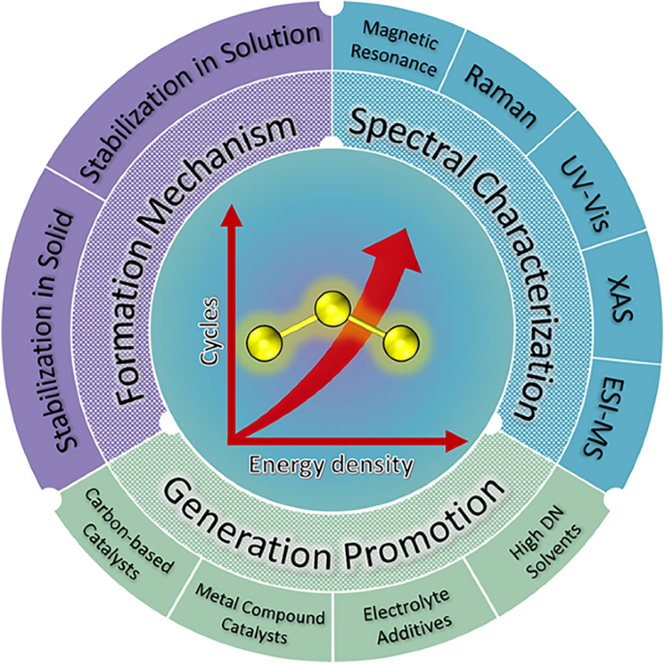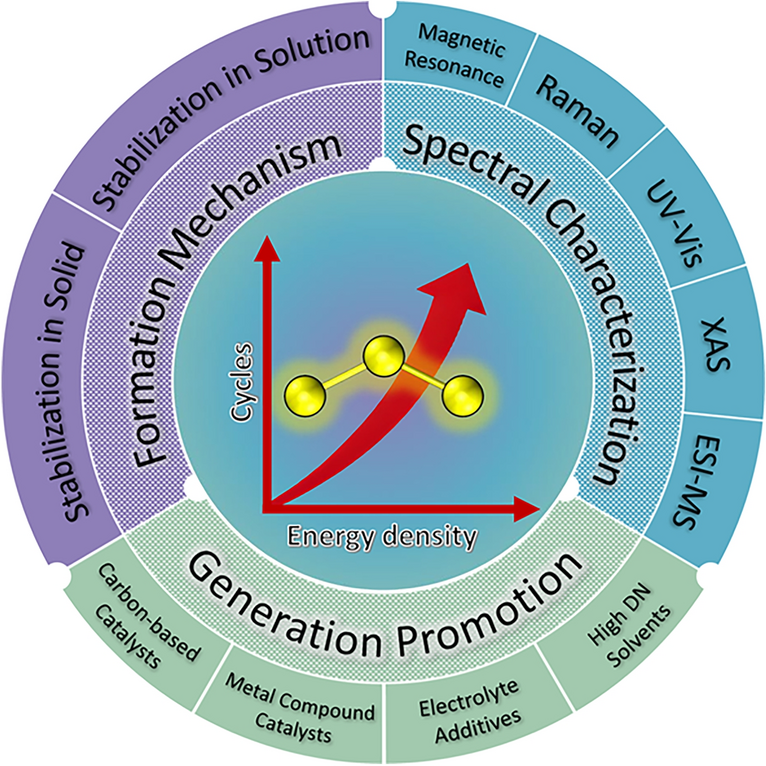Breaking Boundaries: Advancing Trisulfur Radical‑Mediated Catalysis for High‑Performance Lithium-Sulfur Batteries

Lithium–sulfur batteries (LSBs) are on the brink of transforming energy storage with their remarkable theoretical energy density and cost-effective materials. However, several challenges, including the notorious shuttle effect, electrode passivation, and slow reaction kinetics, have impeded their widespread adoption. Now, researchers from the Interdisciplinary Research Center for Sustainable Energy Science and Engineering at Zhengzhou University and the Key Laboratory of Advanced Energy Materials Chemistry at Nankai University, led by Professor Zhen Zhou, present a comprehensive review titled “Breaking Boundaries: Advancing Trisulfur Radical-Mediated Catalysis for High-Performance Lithium-Sulfur Batteries”. This work offers valuable insights into how trisulfur radicals (TRs) can act as powerful catalysts to significantly enhance the electrochemical performance of LSBs.
Why Trisulfur Radicals Matter
- Enhanced Sulfur Utilization: TRs serve as critical intermediates in the sulfur reduction reaction (SRR), facilitating the full conversion of elemental sulfur (S8) to lithium sulfide (Li2S) and thereby maximizing sulfur utilization.
- Accelerated Reaction Kinetics: By providing additional reaction pathways, TRs significantly speed up the electrochemical reactions, reducing the overpotential associated with Li2S oxidation and improving overall battery efficiency.
- 3D Li2S Deposition: TRs enable three-dimensional deposition of Li2S, which mitigates the formation of insulating Li2S films on the electrode surface. This not only prevents electrode passivation but also maintains high conductivity, leading to better cycle stability and performance.
Innovative Strategies for TRs Generation and Stabilization
- High Donor Number (DN) Solvents: Solvents like dimethyl sulfoxide (DMSO) with high DN values (29.8 kcal/mol) significantly enhance the dissociation of lithium polysulfides (LiPSs) into TRs. However, these solvents can corrode the metallic lithium anode. To address this, co-solvent strategies that blend high-DN solvents with traditional ether-based solvents have been developed. These co-solvents balance TRs stabilization with lithium anode compatibility, improving both cycling stability and sulfur utilization.
- Metal Compound Catalysts: Materials such as oxygen-deficient tungsten oxide (WO3-x) and sulfur-deficient vanadium disulfide (VS2-x) have shown exceptional catalytic activity. These compounds not only promote the formation and stabilization of TRs but also enhance the adsorption and conversion of LiPSs, thereby suppressing the shuttle effect and improving overall battery performance.
- Carbon-Based Catalysts: Heteroatom-doped carbon materials, such as nitrogen-doped porous carbon (NPC) and N/O co-doped carbon nanosheets (UN/O-CNS), provide abundant active sites for anchoring TRs. These materials effectively suppress the shuttle effect by stabilizing TRs and facilitating rapid charge transfer, leading to enhanced sulfur conversion efficiency and cycling stability.
Detection and Characterization of TRs
- Electron Spin Resonance (ESR) Spectroscopy: Known for its high precision and sensitivity, ESR is a powerful tool for directly detecting low-concentration TRs. It allows for detailed studies of TRs' generation and transformation mechanisms under various conditions.
- UV–Vis and Raman Spectroscopy: These techniques offer real-time in situ and in operando monitoring capabilities, enabling researchers to dynamically track the formation and behavior of TRs during battery operation. Although their sensitivity and photostability are relatively lower compared to ESR, they provide complementary insights into the reaction kinetics and structural changes of TRs.
- X-ray Absorption Spectroscopy (XAS): XAS provides atomic-level resolution, revealing the electronic structure and chemical environment of TRs. By analyzing the X-ray absorption spectra, researchers can gain insights into the coordination environment and oxidation states of sulfur species, which are crucial for understanding TRs' role in LSBs.
Future Outlook
- Stability and Compatibility: Future research should focus on developing advanced materials that can stabilize TRs while ensuring long-term compatibility with the lithium anode. This includes exploring new solvent systems, additives, and protective coatings.
- Mechanistic Insights: Integrating computational models and machine learning with experimental techniques will help elucidate the complex mechanisms of TRs in LSBs. By understanding the interplay between TRs, LiPSs, and electrode materials, researchers can design more efficient and durable LSBs.
- Practical Applications: Optimizing LSBs for high energy density, long cycle life, and fast charging capabilities is essential for their practical deployment. This involves balancing TRs stabilization with other performance metrics and addressing challenges related to scalability and cost-effectiveness.
Trisulfur radicals are poised to transform the landscape of lithium–sulfur batteries, making them more efficient, stable, and sustainable. Stay tuned for exciting breakthroughs from Professor Zhen Zhou and the team at Zhengzhou University and Nankai University!
Follow the Topic
-
Nano-Micro Letters

Nano-Micro Letters is a peer-reviewed, international, interdisciplinary and open-access journal that focus on science, experiments, engineering, technologies and applications of nano- or microscale structure and system in physics, chemistry, biology, material science, and pharmacy.
Your space to connect: The Fuel cell technologies Hub
A new Communities’ space to connect, collaborate, and explore research on Electrochemistry, Chemical Engineering, and Fuel Cells!
Continue reading announcement





Please sign in or register for FREE
If you are a registered user on Research Communities by Springer Nature, please sign in